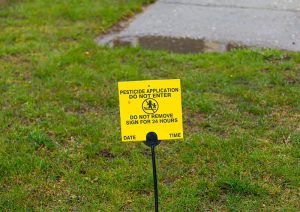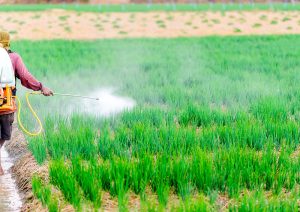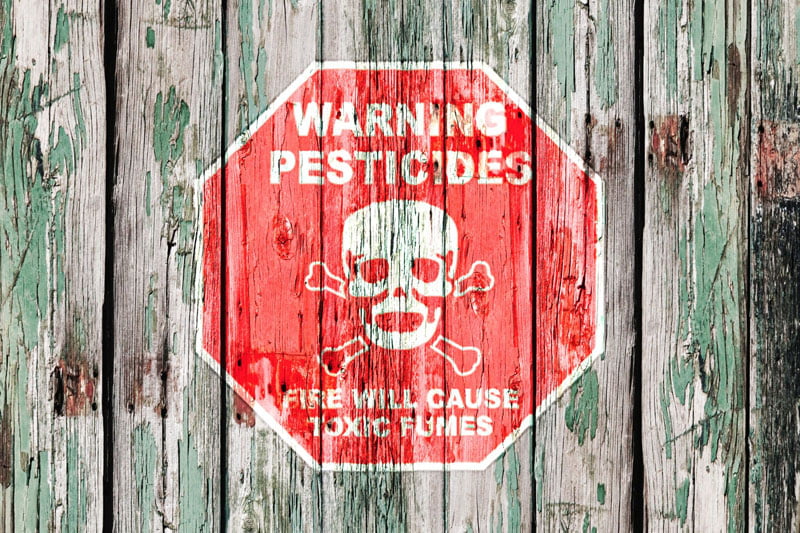Glyphosate, the widely used herbicide, has been subject to extensive discussion due to its impact on both agriculture and the environment. We will delve into the technical aspects of how glyphosate works as a herbicide as well as how those specific mechanisms lead to environmental damages. Glyphosate is considered to be a broad spectrum herbicide, specially known for its effectiveness in killing a wide range of weeds. Its primary mode of action revolves around inhibiting the enzyme “5-enolpyruvylshikimate-3-phosphate synthase” (EPSPS). This particular enzyme is crucial in the synthesis of aromatic amino acids in plants. And so, by disrupting this enzyme glyphosate is able to greatly reduce the plants’ ability to produce proteins, ultimately killing them. The specificity of glyphosate to only plants, stems from the lack of any EPSPS enzyme in mammals including humans of course. This selective tool therefore makes it a very efficient and effective tool in the agricultural field.
Glyphosate is commonly applied as part of a herbicide formulation, with the most well known example being, “Round Up”. And as mentioned it is widely used in agriculture, forestry, as well as even non agricultural settings for weed control. It is sprayed directly onto crops or areas with unwanted vegetation, however, this has raised concerns with the potential spread of glyphosate beyond the intended locations. Runoff from the fields, rainwater and wind can contribute to the spread of glyphosate to surrounding areas and ecosystems as well as our food.

During the application of glyphosate based herbicides there will be a risk of aerial drift, this is due to the methods of application typically being a liquid “spray” which is then spread across the area you want to remove weeds from. The fine droplets and particles of the herbicide may be carried by the wind to areas outside of your intended target, which can result in the deposition of glyphosate on important plant matter, animal habitats, and even bodies of water. Rainfall and irrigation also have the ability to wash glyphosate residues from treated fields to nearby areas. Glyphosate’s highly water soluble nature allows it to easily dissolve in water and thus be transported by way of water flow, also making it very difficult to clean as it would require replacing all contaminated water with water sources from elsewhere. In addition glyphosate is able to leach into soil and in some cases deep enough to reach groundwater, thus contaminating not only contaminating aquatic life and habitats but also our drinking water.

It also gets into our food because as mentioned glyphosate is often sprayed directly onto the crops, and so these crops will often contain residues of the herbicide. And if these crops are not under stringent regulations and undergo a thorough cleaning process some of that residue may end up making its way into our bodies when we eat these vegetables or other crops. It is also very difficult to clean an area once these herbicides have already been used, Glyphosate is known to be very persistent in soil. Often glyphosate can remain in the soil for extended periods of time potentially affecting future crops and nearby vegetation and so even if one stops using glyphosate based products the effects may still linger.
The pathways with which glyphosate can contaminate as highlighted above demonstrate the complexity of how this herbicide works and how to tackle this issue. And as concerns grow about the potential negative impacts more and more mitigation strategies have come forth. For example the use of modern technology to spray the herbicides much more precisely and in exactly needed dosages and concentrations, which can help to minimize runoff and spread to nearby areas. Buffer zones have been suggested to ensure adequate distance from spraying areas to any important surrounding features such as animal habitats, and bodies of water. And of course stricter monitoring and regulation in terms of glyphosate use can be helped to reduce overuse and ensure some of the above mitigation strategies are enforced. And lastly Alternative weed management is becoming more and more popular as people are looking for ways to manage their fields without destroying them at the same time.
Or you could choose organically grown produce to be safe!
Email: info@bynature.vn
Website: bynature.vn




